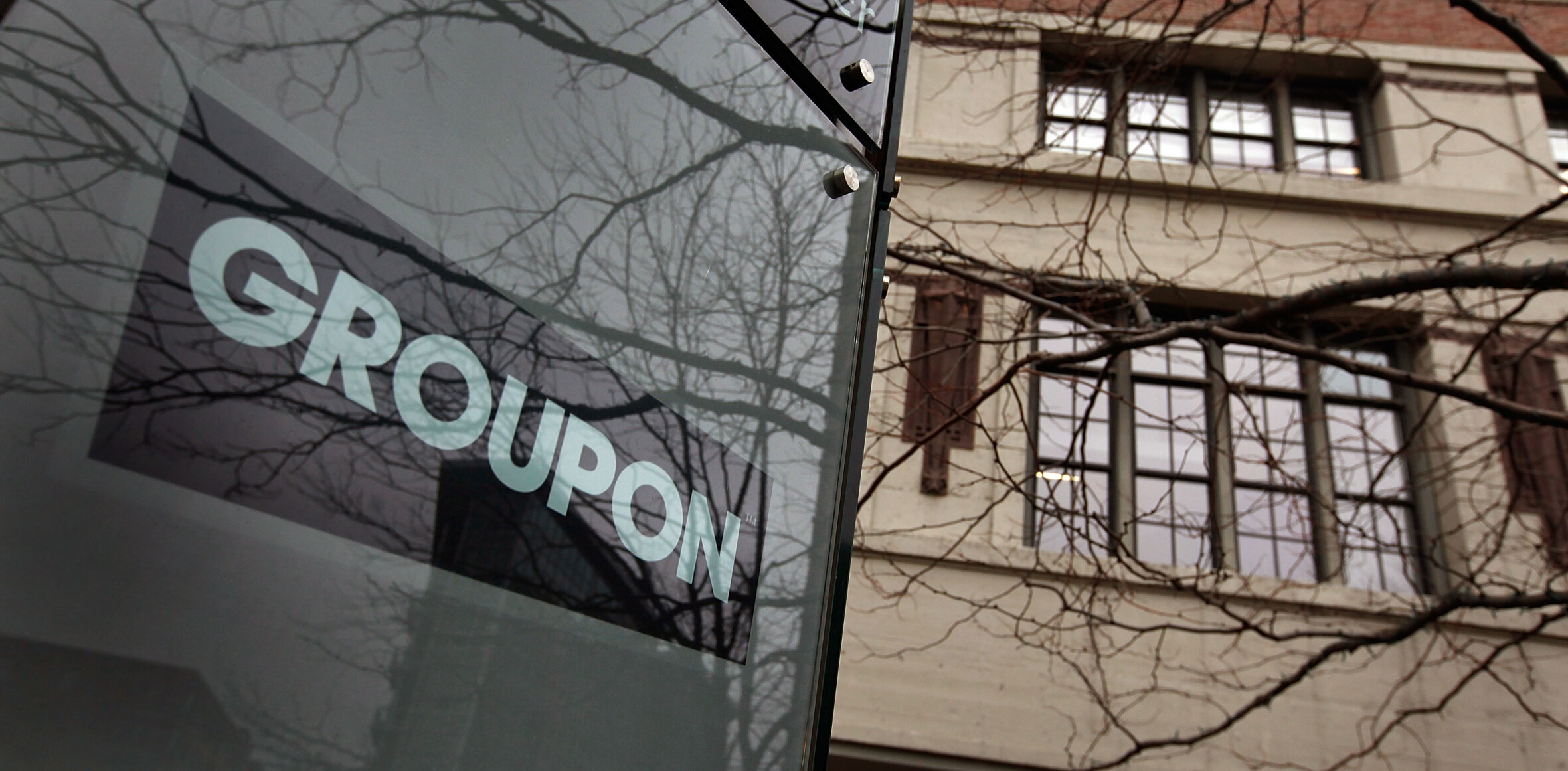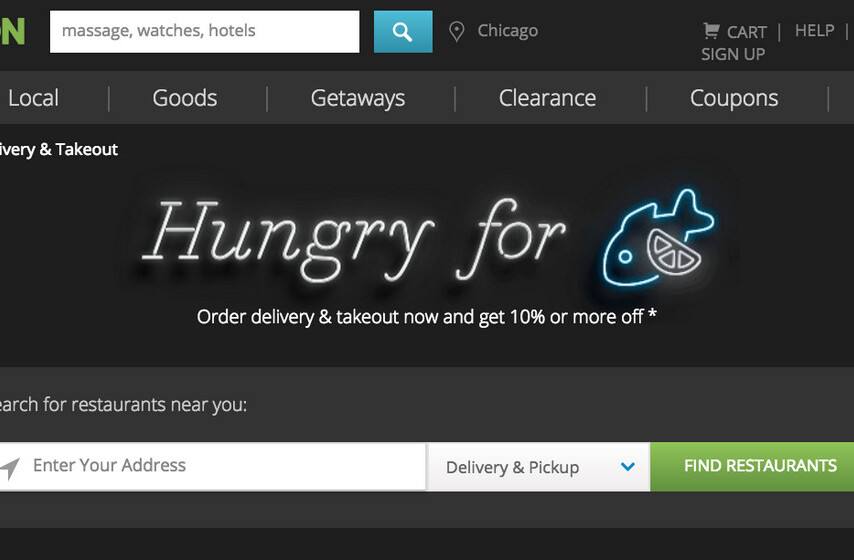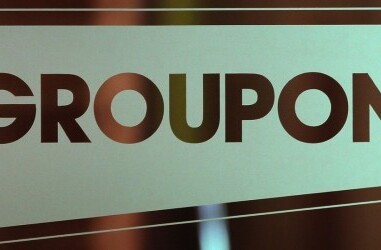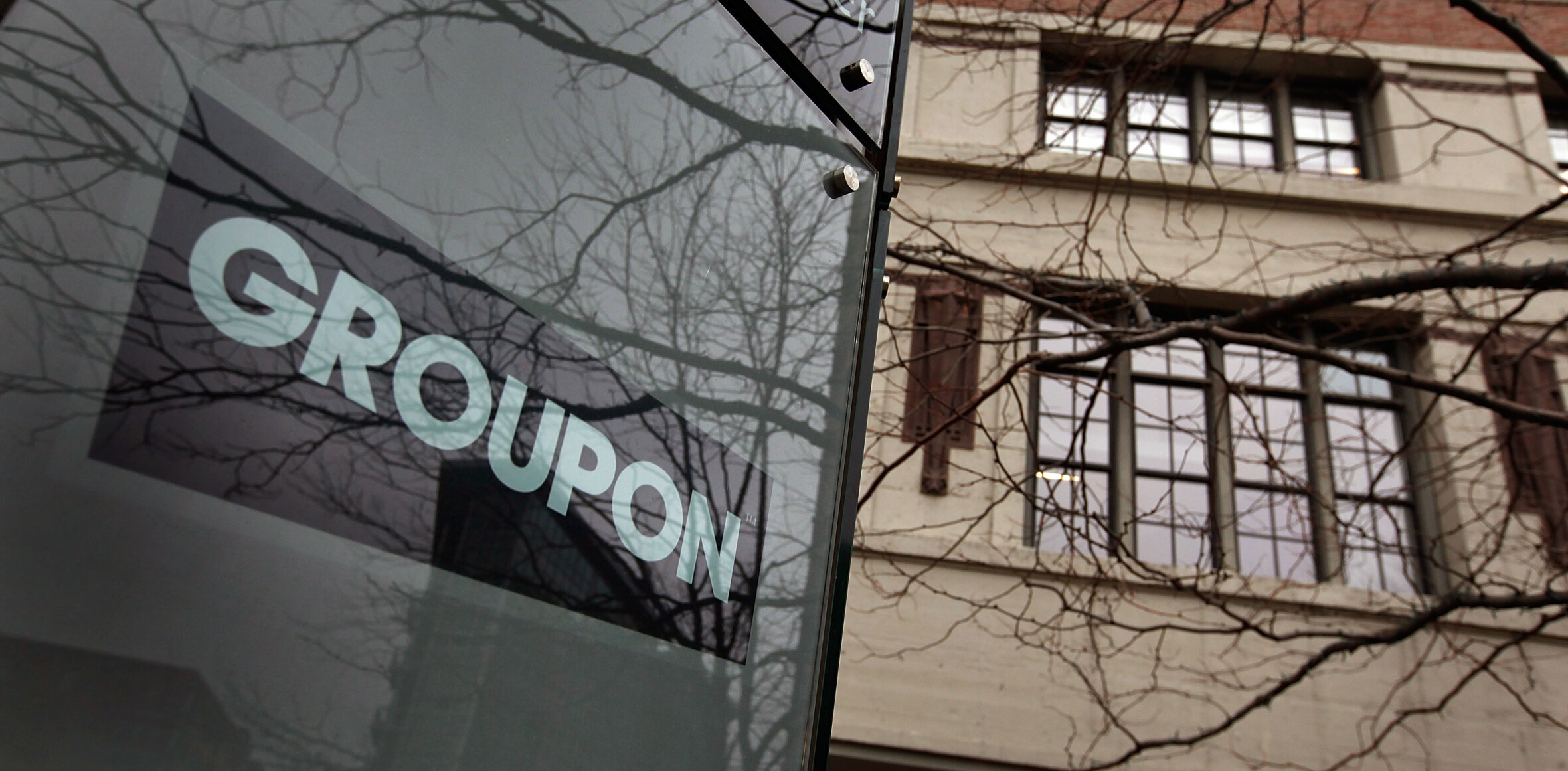
 By just about any measure, Chicago based collective buying service Groupon is killing it.
By just about any measure, Chicago based collective buying service Groupon is killing it.
Just 17 months after launch, they are in 50 cities. They have 3M subscribers and have sold 2.7M Groupons (deals). They have raised $30M in funding from Accel. Before taking funding, they were profitable in just six months, and they are projected to drive $100M in sales in 2010 (of which Groupon will take a whopping 30-50%).
And this doesn’t seem like a service that will struggle to break out of the early adopter ghetto. Nobody is saying stuff like “Sure, Silicon Valley people like deals, but normal people just won’t get it!” People get deals.
This is a model that can work in any city, in any country, and perhaps, in any vertical.
Groupon CEO and founder Andrew Mason opened up a little bit about the company this morning at the Kelsey Marketplaces conference. Here is what he had to say.
On Groupon’s History
Groupon spun out of a company called The Point – a platform for mobilizing group action. Mason described the site as a way for people to try and take on tasks that were too big for one person, but just maybe could be manageable with grassroots support. Examples of the service in action were an ill fated plan to put a winter dome over Chicago (failed in bid to raise $10B in donations), a grassroots movement to buy the Chicago Cubs (failed), a campaign to make Election Day a national holiday (failed), and the occasional group buying project like pulling 80 people together to get a discount on a subscription to the Economist (didn’t fail).
As 2007 came to a close, Groupon started to think about trying to actually make some money. They were intrigued by the collective buying examples that were interspersed with the Web 2.0 inanity of The Point.
So they took a look at Mercata, a Web 1.0 play that went all in on trying to apply collective buying to consumer products. Mercata actually filed for an IPO before shutting its doors in 2001 – here’s a fascinating recount.
Mason thinks that Mercata failed due to their focus on consumer products, which were already sold at scale by large etailers. It was very difficult for collective buying to beat the prices of wholesale shops. He also didn’t like how Mercata users had to wait a week to see their discount.
By October, 2008, The Point had decided on a plan of attack. One month later GetYourGroupon.com launched in Chicago, followed quickly by Boston.
The Groupon Model
Conscious of not repeating Mercata’s mistakes and eager to leverage their collective buying experience from The Point, Groupon settled on a strict, one deal per day model, that would allow the small company to concentrate all of its marketing resources towards distributing one deal, and one deal only. Furthermore, the diversity of deals that you see in Groupon – from mani / pedis to helicopter lessons – is no accident. The last thing Groupon wanted to do was attract a community of penny pinchers who would freeload off Groupons merchants by attempting to eat solely of Groupon deals.
To drive lasting value, Groupon needed to find a way to deliver new customers who had the potential of becoming regular customers. Mobilizing a city’s penny pinchers was not the way to do this.
With these basic principles in tow, Groupon set about implementing the collective buying model. One local business deal was offered per day. The deal only kicked in if a certain number of buyers signed up. There would no week long waits, no Groupon verticals (to keep the focus on merchant / city discovery), and merchant sales would be low risk, and hopefully, low touch.
The Value for Merchants
Groupon’s Chicago newsletter goes out to 300K people. So whether or not a single person buys your deal, your company is getting featured in a newsletter to hundreds of thousands local shoppers. For free. A similar paid newsletter blast would cost $75K. There’s value here.
But wait, there’s more.
Groupon users tend to spend 50% more than the value of their deal. So if I have a $25 Groupon to chow down at a local restaurant, I will likely spend $37.50.
Cash is collected up front by Groupon, and some percentage of buyers will never cash in.
The merchant’s cash outlay is zero. The flow of cash is unidirectional – checks going from Groupon to the merchant.
There’s a volume guarantee. The merchant only has to pay out the discount if a certain volume level is hit.
Groupon is a full service agency. They write the copy that goes on the promotions, they design the page. “It’s way easier than AdWords,” noted Mason.
This model generates a tremendous amount of value for local merchants, with every dollar “spent” (no cash has to be put up), going directly toward a paid customer. It’s not hard to see why local merchants could be talked into taking Groupon for a spin, especially in a down economy.
As evidence of the value generated by Groupon for merchants, the company claims a backlog of 100s of merchants in each city. Another data point – a Groupon campaign for one day for the Art Institute of Chicago generated 5K subscriptions. In the 100 year history of the Institute, they had generated 85K subscriptions. That’s moving the dial.
Mason summarizes the merchant value like this: “There has never been anything like this for local merchants.”
The Value for Users
It’s a deal!
Beyond the monetary hook, Groupon tries to offer only high quality merchants, positioning itself more as a city guide than a coupon service.
On the Clones
Mason estimates that there are between 100-150 Groupon clones around the world, with “varying degrees of shamelessness.” He pulled up a screenshot of a Russian clone that appeared to have literally ripped off Groupon’s CSS.
The simplicity of the underlying technology, the easy sell to merchants, and the red hot demand from consumers make this an incredibly easy service to copy. In fact, Mason noted that Groupon’s strict policy of limiting deals to one per day is enabling the clones to survive. Faced with backlogs of weeks if not months to get on Groupon, merchants will often turn to competitors.
On Merchant Quality
Groupon’s position as the market leader allows them to cherry pick the very best local merchants.
Merchants are cross checked against local editorial reviews as well as consumer reviews to ensure that only high quality merchants are getting featured. A point that came up repeatedly is that Groupon would rather leave business on the table in the form of backlogs, than to sacrifice their merchant quality one iota.
On White Labels, Franchising, and Partnerships
When the Groupon team originally drew up their business plan, they hoped to franchise their model out to different partners and to lean on third party salesforces. After a few months, it became clear that this wouldn’t work. Partners such as newspapers and local media companies just wouldn’t move fast enough for Groupon. And third party salesforces weren’t able to deliver to the level of Groupon’s own in house team.
This led to Groupon’s decision to raise big money, and manage both sales and city expansion in house.
Mason did say they would always consider partnerships, with the caveat that they are determined to preserve Groupon’s unique voice. (a good example of their tone is this unsubscribe video.)
On What Keeps Groupon up at Night
According to Mason, it’s not the clones. He hasn’t seen enough innovation out of any of them to feel threatened – in fact, he characterizes most of competitors as engaging in a strategy of “see who can copy Groupon the closest.”
Mason feels that the true competitors might not even have surfaced yet. Local media companies that might try and incorporate aspects of Groupon into a large user base.
Summary
Groupon seems to have captured lighting in a bottle, and as of now, are able to deliver an unparalleled level of value to local merchants.
However, the ease of duplication, the value being left on the table in the form of Groupon backlogs, the huge number of cities and towns in the world, and the clear opportunity for vertical players have combined to give oxygen to a whole new breed of collective buying companies. A few of the funded ones are LivingSocial, TownHog, and Homerun.
We may be witnessing the emergence of a whole new type of advertising.
Collective buying may soon be as common as CPC.
Get the TNW newsletter
Get the most important tech news in your inbox each week.
![Reblog this post [with Zemanta]](https://img.zemanta.com/reblog_e.png?x-id=d278357d-9dc7-475a-9ad1-f316d39246b4)




